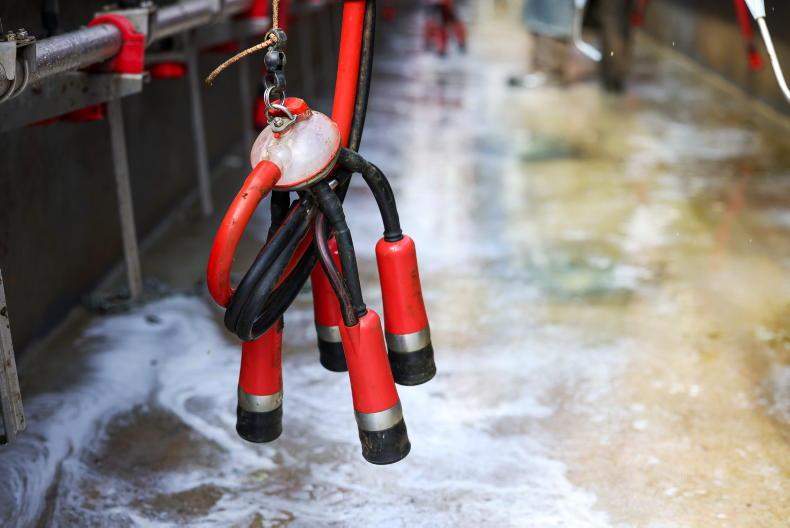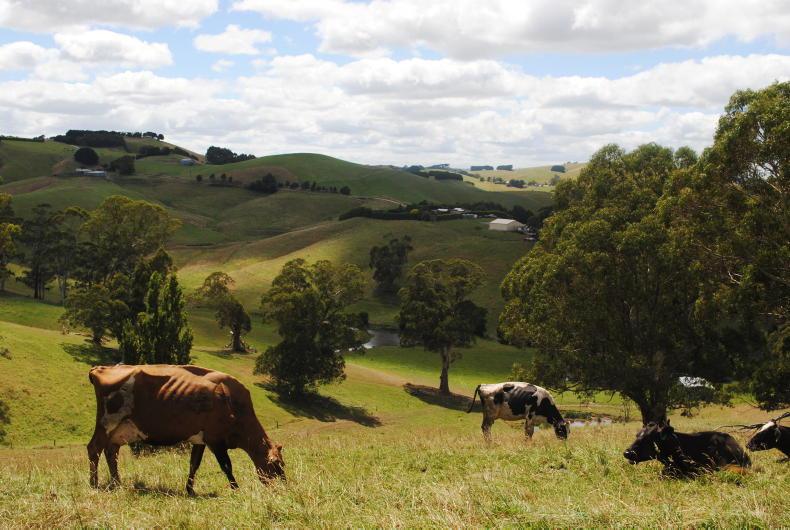The risk that foot-and-mouth disease (FMD) will enter Britain over the next three months has been assessed as medium by the Department of Environment, Food and Rural Affairs (Defra).
“This means that the virus is expected to enter Britain ‘regularly’ over the next three months,” Defra said.
“The risk of entry of FMD was considered highest through commercial, personal or illegal trade in products of animal origin. Each of these routes had a medium risk (meaning that the virus is expected to enter Britain ‘regularly’ over the next three months through each of the commercial, personal and illegal trade routes),” it said.
The risk assessment, published in recent days, was completed on 3 April 2025 when there were five confirmed cases in Slovakia and four confirmed cases in Hungary of the same FMD strain.
The assessment considers that the risk associated with the single outbreak in Germany in January 2025 is no longer significant. However, it may be indicative of a general biosecurity issue in the eastern and central European Union.
As the disease is highly transmissible (with an incubation period of between two to 14 days), a major concern is that the virus will spread to a free-area and subsequently spread to Britain before restrictions are implemented. This is known as ‘silent spread’ of the disease.
High risk
“Further cases, particularly additional member states being infected, or a change in the epidemiological situation such as evidence of disease in wild animals, would cause the risk to increase to ‘high’,” Defra stated.
“It is likely that new cases will be detected in areas surrounding the current known cases in Europe despite restrictions in place as required by current EU legislation and any further country-level restrictions in Hungary and Slovakia.
“There is free movement of people, goods and vehicles across EU member states in unrestricted areas, and the possibility for wild animals (in particular, wild boar and deer) in the area to be infected.
“Depending on surveillance and veterinary capacity, early detection is difficult in wild animals and infection may be particularly challenging to control.
“The use of suppressive vaccination in affected regions is beneficial to disease control but may impact surveillance and, in a worst-case scenario, could result in delays to detecting disease spread,” it added.
Given the possibility of human-mediated spread and wild animals being infected in the region and the frequency of new cases being reported to date, Defra said it cannot rule out the possibility of sudden wider geographical movements of the disease into new areas over the coming days and weeks.
Trading partners
Britain’s top five EU trading partners for imports of products of animal origin from susceptible species into Britain are the Republic of Ireland, Netherlands, Germany, Poland and Denmark.
Defra said that given the proximity to known outbreaks, a major concern is that the disease will spread undetected into Poland and subsequently spread to Britain through commercial, personal or illegal movement of products of animal origin before the presence of disease is detected in Poland.
“Given the proximity of Czechia and Austria to known cases, disease spread into these two member states is also a possibility. However, it should be noted that restrictions are currently in place for Austria due to the proximity of the outbreaks to the Austrian border,” it said.
Illegal imports
A second major concern is the continued importation of high volumes of illegal products of animal origin.
“Multiple safeguard measures have been implemented over the past three years including limiting the weight of meat or dairy products which can be transported in luggage or vehicles from the EU to 2kg of commercially produced, packaged and marked goods and banning the transport of these products from certain member states where animal diseases are present,” it said.
The seized meat does not meet Britain’s import requirements
Despite this, Defra said that high volumes of illegal imports are still routinely seized (mean weight 158.30kg per seizure) at ports of entry such as Dover.
“The seized meat does not meet Britain’s import requirements. It frequently appears to be a product of home slaughter and, as such, is unlikely to have had veterinary oversight during production or been subject to official controls for example, ante- and postmortem inspection.
“In some cases, the meat seized has health marks which do not allow placing on the market beyond the EU. This meat also frequently arrives in a condition unsuitable for meat for human consumption, for example lack of cold chain or the packaging leaking,” it said.
Uncertainty
Defra said that there is a high level of uncertainty with the results of this risk assessment, meaning “further research is very likely to have an important impact on our confidence in the risk estimate”.
It said that there are major gaps in Defra’s epidemiological knowledge at the current time including:
Very limited information and analysis on how the virus was introduced into the EU.The extent of the spread of the virus within the EU. Whether the virus is currently in wild animals in the area. Whether EU-wide movement restrictions will be put in place. Whether measures at Britain’s borders will be sufficient to detect and prevent products of animal origin being brought into Britain as illegal imports.This risk assessment does not assess the risk from non-EU countries in the European region or from the rest of the world. It does not assess the risk that any susceptible species within Britain will be exposed to the virus and become infected, leading to a disease outbreak. It does not consider the consequences of the disease within Britain.
The risk that foot-and-mouth disease (FMD) will enter Britain over the next three months has been assessed as medium by the Department of Environment, Food and Rural Affairs (Defra).
“This means that the virus is expected to enter Britain ‘regularly’ over the next three months,” Defra said.
“The risk of entry of FMD was considered highest through commercial, personal or illegal trade in products of animal origin. Each of these routes had a medium risk (meaning that the virus is expected to enter Britain ‘regularly’ over the next three months through each of the commercial, personal and illegal trade routes),” it said.
The risk assessment, published in recent days, was completed on 3 April 2025 when there were five confirmed cases in Slovakia and four confirmed cases in Hungary of the same FMD strain.
The assessment considers that the risk associated with the single outbreak in Germany in January 2025 is no longer significant. However, it may be indicative of a general biosecurity issue in the eastern and central European Union.
As the disease is highly transmissible (with an incubation period of between two to 14 days), a major concern is that the virus will spread to a free-area and subsequently spread to Britain before restrictions are implemented. This is known as ‘silent spread’ of the disease.
High risk
“Further cases, particularly additional member states being infected, or a change in the epidemiological situation such as evidence of disease in wild animals, would cause the risk to increase to ‘high’,” Defra stated.
“It is likely that new cases will be detected in areas surrounding the current known cases in Europe despite restrictions in place as required by current EU legislation and any further country-level restrictions in Hungary and Slovakia.
“There is free movement of people, goods and vehicles across EU member states in unrestricted areas, and the possibility for wild animals (in particular, wild boar and deer) in the area to be infected.
“Depending on surveillance and veterinary capacity, early detection is difficult in wild animals and infection may be particularly challenging to control.
“The use of suppressive vaccination in affected regions is beneficial to disease control but may impact surveillance and, in a worst-case scenario, could result in delays to detecting disease spread,” it added.
Given the possibility of human-mediated spread and wild animals being infected in the region and the frequency of new cases being reported to date, Defra said it cannot rule out the possibility of sudden wider geographical movements of the disease into new areas over the coming days and weeks.
Trading partners
Britain’s top five EU trading partners for imports of products of animal origin from susceptible species into Britain are the Republic of Ireland, Netherlands, Germany, Poland and Denmark.
Defra said that given the proximity to known outbreaks, a major concern is that the disease will spread undetected into Poland and subsequently spread to Britain through commercial, personal or illegal movement of products of animal origin before the presence of disease is detected in Poland.
“Given the proximity of Czechia and Austria to known cases, disease spread into these two member states is also a possibility. However, it should be noted that restrictions are currently in place for Austria due to the proximity of the outbreaks to the Austrian border,” it said.
Illegal imports
A second major concern is the continued importation of high volumes of illegal products of animal origin.
“Multiple safeguard measures have been implemented over the past three years including limiting the weight of meat or dairy products which can be transported in luggage or vehicles from the EU to 2kg of commercially produced, packaged and marked goods and banning the transport of these products from certain member states where animal diseases are present,” it said.
The seized meat does not meet Britain’s import requirements
Despite this, Defra said that high volumes of illegal imports are still routinely seized (mean weight 158.30kg per seizure) at ports of entry such as Dover.
“The seized meat does not meet Britain’s import requirements. It frequently appears to be a product of home slaughter and, as such, is unlikely to have had veterinary oversight during production or been subject to official controls for example, ante- and postmortem inspection.
“In some cases, the meat seized has health marks which do not allow placing on the market beyond the EU. This meat also frequently arrives in a condition unsuitable for meat for human consumption, for example lack of cold chain or the packaging leaking,” it said.
Uncertainty
Defra said that there is a high level of uncertainty with the results of this risk assessment, meaning “further research is very likely to have an important impact on our confidence in the risk estimate”.
It said that there are major gaps in Defra’s epidemiological knowledge at the current time including:
Very limited information and analysis on how the virus was introduced into the EU.The extent of the spread of the virus within the EU. Whether the virus is currently in wild animals in the area. Whether EU-wide movement restrictions will be put in place. Whether measures at Britain’s borders will be sufficient to detect and prevent products of animal origin being brought into Britain as illegal imports.This risk assessment does not assess the risk from non-EU countries in the European region or from the rest of the world. It does not assess the risk that any susceptible species within Britain will be exposed to the virus and become infected, leading to a disease outbreak. It does not consider the consequences of the disease within Britain.










SHARING OPTIONS